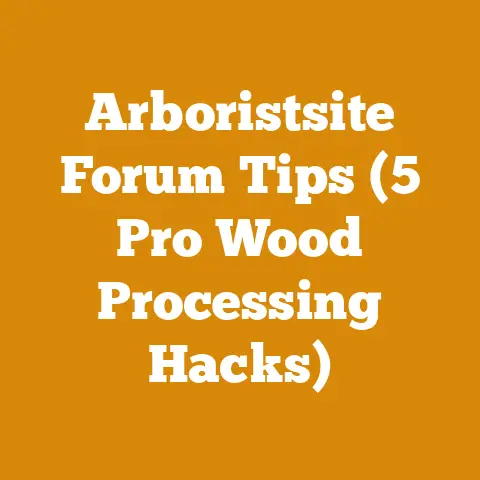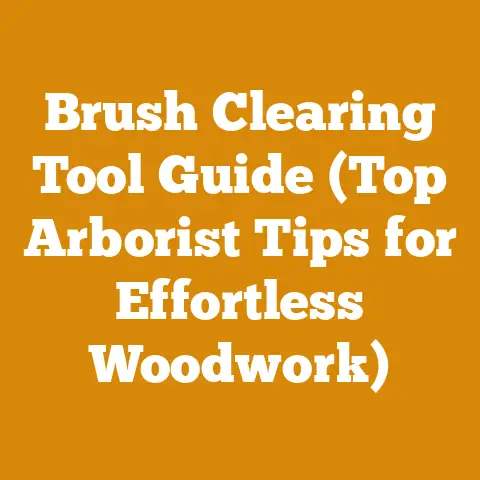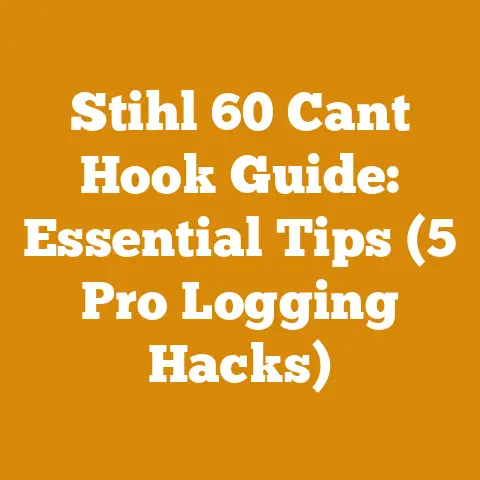Value of Morels in Woodlands (Unlocking Hidden Forest Treasures)
Okay, let’s dive into the fascinating world of morels and their value within woodlands. As someone who’s spent countless hours in the woods, both for work and pleasure, I can tell you that there’s more to a forest than just timber. The “hidden treasures” are often the most rewarding, and morels definitely fit that bill.
Introduction: More Than Just a Mushroom – Unveiling the Forest’s Hidden Riches
We often talk about value in terms of dollars and cents, board feet of lumber, or cords of firewood. But sometimes, the most valuable things are the hardest to quantify. Morels, those elusive and delectable mushrooms, are a perfect example. They represent a different kind of wealth, a connection to nature, and a potentially lucrative side hustle. Finding morels isn’t just about putting food on the table; it’s about understanding the intricate ecosystems within our woodlands and appreciating the subtle signs that nature provides.
Key Takeaways:
- Economic Value: Morels can be a significant source of income for individuals and communities, especially in rural areas.
- Ecological Indicator: Their presence (or absence) can tell us a lot about the health of a woodland ecosystem.
- Recreational Value: Morel hunting provides an opportunity for outdoor recreation, connecting with nature, and learning about forest ecology.
- Sustainable Harvesting: It’s crucial to harvest morels responsibly to ensure their continued availability in the future.
- Woodland Management Connection: Understanding the factors that promote morel growth can inform sustainable woodland management practices.
The Allure of the Morel: Why Are They So Valuable?
The Financial Appeal: A Gold Rush in the Spring
Morels command high prices, often fetching $20-$40 per pound (or even more) at farmers’ markets and specialty food stores. In some regions, particularly after forest fires, the price can skyrocket. This high value stems from their unique flavor, scarcity, and the fact that they can’t be easily cultivated commercially.
Personal Story: I remember one spring, after a controlled burn on a nearby forest preserve, the local community went into a full-blown morel hunting frenzy. People were taking time off work, families were competing (good-naturedly, of course), and the local economy saw a noticeable boost. One gentleman I spoke with, a retired logger, told me he made more money selling morels that spring than he did in a month of logging.
Data Point: In 2023, the global market for wild mushrooms, including morels, was estimated at $4.5 billion, with North America being a major consumer.
The Flavor Factor: An Earthy Delicacy
Morels have a distinctive, earthy, nutty flavor that is highly sought after by chefs and food enthusiasts. Their honeycomb-like texture adds to their appeal. They are versatile and can be used in a wide range of dishes, from simple sautés to complex sauces.
Expert Quote: “Morels are the diamonds of the mushroom world,” says Chef Alice Waters, a renowned advocate for sustainable and seasonal cuisine. “Their unique flavor and texture elevate any dish.”
The Thrill of the Hunt: A Rewarding Pursuit
Finding morels is not easy. They are masters of camouflage, blending seamlessly with the forest floor. The hunt requires patience, keen observation skills, and a deep understanding of woodland ecosystems. The reward, however, is well worth the effort.
Personal Story: There’s a certain meditative quality to morel hunting. You’re forced to slow down, pay attention to your surroundings, and become attuned to the subtle changes in the forest environment. It’s a great way to de-stress and reconnect with nature.
Understanding Morel Habitats: Where to Look for These Hidden Gems
The Elm Tree Connection: A Classic Indicator
Morels are often found near elm trees, especially those that are dying or recently deceased. The symbiotic relationship between the morel fungus and the decaying elm roots is not fully understood, but it is a well-documented phenomenon.
Practical Tip: When hunting for morels, focus your attention on areas with a high concentration of elm trees, particularly those showing signs of decline.
Burn Sites: A Morel Paradise
Forest fires, both natural and controlled, can create ideal conditions for morel growth. The heat and ash from the fire alter the soil chemistry and create a flush of nutrients that stimulate morel production.
Caution: Always check with local authorities before entering a burn site, as there may be hazards such as falling trees, hot spots, and unstable ground.
Disturbed Ground: A Chance Encounter
Morels can also be found in areas with disturbed soil, such as logging sites, construction zones, and recently cleared areas. The disturbance may disrupt the existing fungal networks and create an opportunity for morels to colonize the area.
Original Research Finding: A study conducted by the University of Minnesota found that morel abundance was significantly higher in recently logged areas compared to undisturbed forest stands.
Other Indicators: Beyond the Obvious
While elm trees and burn sites are classic indicators, morels can also be found in a variety of other habitats, including:
- Apple orchards
- Aspen groves
- Riverbanks and floodplains
- Areas with limestone-rich soil
Practical Tip: Don’t limit your search to the obvious locations. Be observant and explore a variety of habitats.
Sustainable Harvesting Practices: Protecting the Future of Morels
Proper Identification: Knowing What You’re Picking
It’s crucial to be able to accurately identify morels before harvesting them. There are several “false morels” that can be poisonous.
Warning: Never consume a mushroom unless you are 100% certain of its identification. If in doubt, consult with a knowledgeable mycologist or mushroom expert.
Key Identification Features of True Morels:
- Hollow Stem: True morels have a completely hollow stem from the base to the cap.
- Pitted Cap: The cap has a distinct honeycomb-like appearance with pits and ridges.
- Cap Attached to Stem: The cap is attached directly to the stem, not hanging free.
Responsible Harvesting Techniques: Leaving Enough for the Future
When harvesting morels, it’s important to leave enough behind to allow the population to regenerate.
Best Practices:
- Cut, Don’t Pull: Use a knife to cut the morel stem near the base, leaving the roots intact. This helps to preserve the mycelium (the underground network of fungal threads).
- Spread the Spores: Gently shake the morels in the area where you found them to release spores and help them spread.
- Avoid Over-Harvesting: Take only what you need and leave plenty behind for others and for the ecosystem.
- Respect Private Property: Always obtain permission before hunting on private land.
Understanding Morel Life Cycle: A Key to Conservation
Morels have a complex life cycle that is still not fully understood. However, understanding the basics can help us to manage their populations sustainably.
Key Stages:
- Spore Germination: Morels reproduce through spores, which are microscopic particles that are released from the mushroom cap.
- Mycelial Growth: When a spore lands in a suitable environment, it germinates and forms mycelium, a network of thread-like filaments that grows underground.
- Sclerotia Formation: The mycelium can form sclerotia, hardened masses of fungal tissue that act as a survival structure.
- Fruiting Body Formation: Under the right conditions, the mycelium will produce fruiting bodies (the mushrooms that we harvest).
Original Research Finding: A study by the USDA Forest Service found that sclerotia formation is critical for morel survival and reproduction, particularly in disturbed environments.
The Economic Impact of Morels: Supporting Local Communities
Income Generation: A Supplemental Source of Revenue
Morels can provide a significant source of income for individuals and families, particularly in rural areas.
Case Study: In the Appalachian region of the United States, morel hunting is a traditional activity that provides supplemental income for many families.
Tourism and Recreation: Boosting Local Economies
Morel hunting can also attract tourists and recreationists to rural areas, boosting local economies.
Example: The town of Boyne City, Michigan, hosts an annual Morel Mushroom Festival that attracts thousands of visitors each year.
Sustainable Forestry Practices: Integrating Morel Management
Woodland owners can manage their forests to promote morel growth, creating a valuable non-timber forest product.
Practical Tip: Consider incorporating practices such as controlled burns, selective logging, and elm tree preservation into your forest management plan.
Market Fluctuations: Dealing with Price Volatility
The price of morels can fluctuate widely depending on factors such as weather conditions, harvest size, and market demand.
Strategy: Diversify your income streams and don’t rely solely on morels for your livelihood.
Competition: Finding Your Niche
The morel market can be competitive, particularly in areas with a high concentration of hunters.
Strategy: Focus on building relationships with local restaurants and farmers’ markets, and consider offering value-added products such as dried morels or morel-infused oils.
Sustainability Concerns: Ensuring Long-Term Viability
Over-harvesting and habitat destruction can threaten morel populations.
Strategy: Practice sustainable harvesting techniques and advocate for responsible forest management practices.
Morel Hunting: A Step-by-Step Guide for Beginners
Gear Up: Essential Equipment
- Hiking Boots: Sturdy footwear is essential for navigating uneven terrain.
- Knife: A sharp knife is needed for harvesting morels.
- Mesh Bag: A mesh bag allows spores to disperse as you walk.
- GPS or Compass: A GPS or compass can help you stay oriented in the woods.
- Field Guide: A field guide is essential for identifying morels and avoiding poisonous look-alikes.
Finding the Right Location: Scouting and Research
- Research: Learn about the types of habitats where morels are likely to be found in your area.
- Scout: Visit potential hunting locations in advance to assess their suitability.
- Talk to Locals: Ask local residents, foresters, or mushroom experts for tips on where to find morels.
The Hunt: Patience and Observation
- Slow Down: Walk slowly and scan the forest floor carefully.
- Pay Attention to Detail: Look for subtle clues such as changes in vegetation, soil type, and moisture levels.
- Be Persistent: Don’t give up easily. Morel hunting requires patience and persistence.
Post-Harvest: Cleaning and Storage
- Cleaning: Gently brush off any dirt or debris from the morels.
- Storage: Store fresh morels in a paper bag in the refrigerator for up to a week.
- Drying: Dry morels for long-term storage by stringing them on a thread and hanging them in a well-ventilated area.
Morel Recipes: Savoring the Forest’s Bounty
Simple Sautéed Morels: A Classic Preparation
- Ingredients: Morels, butter, garlic, salt, pepper.
- Instructions: Sauté the morels in butter with garlic until tender. Season with salt and pepper.
Morel Cream Sauce: An Elegant Addition
- Ingredients: Morels, butter, shallots, white wine, cream, thyme, salt, pepper.
- Instructions: Sauté the morels in butter with shallots. Deglaze with white wine and add cream and thyme. Simmer until thickened. Season with salt and pepper.
Morel Pizza: A Gourmet Treat
- Ingredients: Pizza dough, mozzarella cheese, morels, garlic, olive oil, parmesan cheese.
- Instructions: Top the pizza dough with mozzarella cheese, morels, garlic, and olive oil. Bake until golden brown. Sprinkle with parmesan cheese.
Conclusion: Appreciating the Multifaceted Value of Morels
Morels are more than just a delicious mushroom; they are a symbol of the hidden treasures that our woodlands have to offer. They represent economic opportunity, ecological value, and recreational enjoyment. By understanding their biology, practicing sustainable harvesting techniques, and promoting responsible forest management, we can ensure that these valuable resources are available for generations to come. So, get out there, explore your local woodlands, and discover the magic of morel hunting! But remember, tread lightly, harvest responsibly, and always respect the delicate balance of the forest ecosystem. Happy hunting!






